You will need:
- 1 clear glass jar
- 1 match
- A kettle with water
- A rubber glove
Adult supervision needed
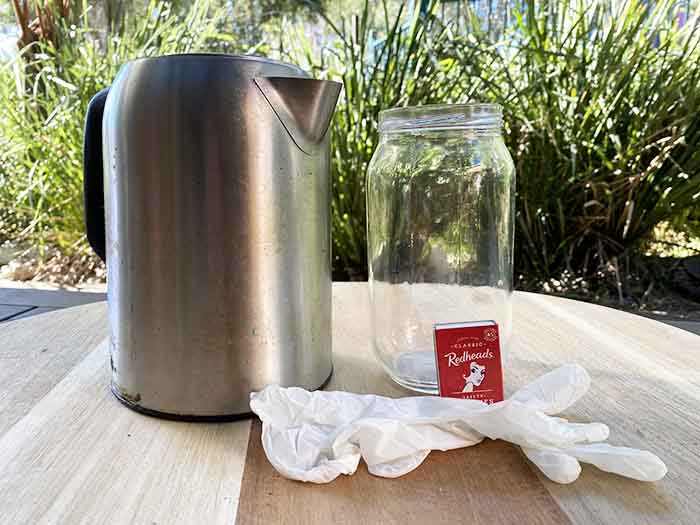
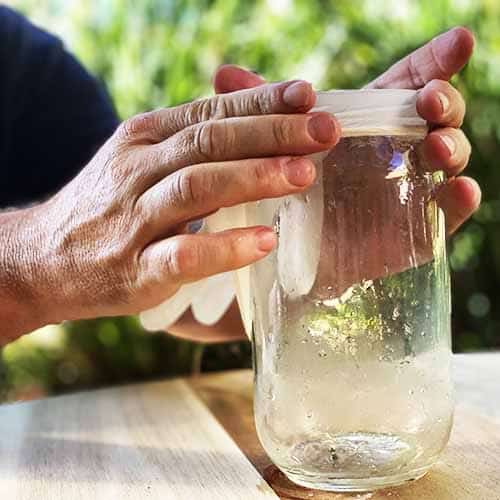
Quickly stretch your rubber glove over the entrance of the glass jar. The rubber glove should be stretched tightly across the jar but still loose enough to be able to move up and down without tearing.
- Using a latex glove:
We’ve found that it is easier to then clamp your hands around the side of the jar so that the rubber glove fingers are not involved in the experiment.
- Using a laundry rubber glove:
If you are using a laundry glove (and you have a large enough jar), another way is to place the glove fingers all the way into the jar and then roll the opening of the glove over the entrance of the jar. The glove should then be entirely inside the jar and be upside down when you place the jar on the table.
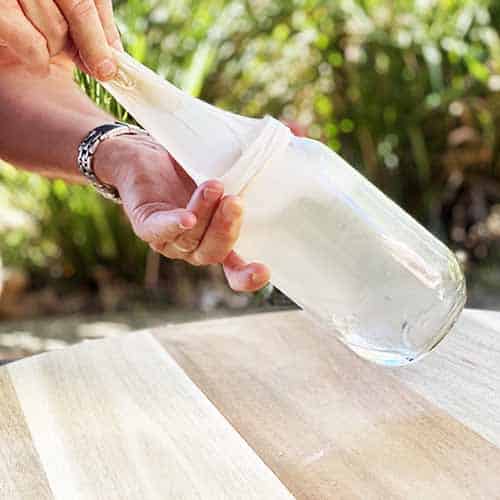
Now it’s time to make your cloud in a jar!
- Using a latex glove
Pinch the middle of the stretched rubber and pull upwards.
- Using a laundry rubber glove:
Place your hand as far into the upside-down glove as you can. Now pull the glove upwards.
In both versions, you should see a cloud momentarily form in the jar. You can then repeat the demonstration by pushing the glove back inside the jar and then pulling the glove out again.
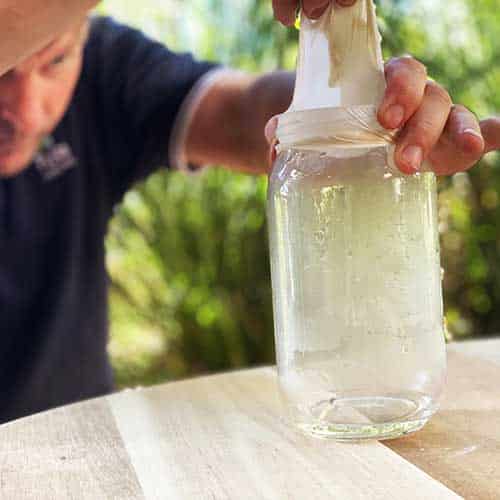
Troubleshooting
- If you find there is too much condensation inside your jar to see the cloud, your water is too hot.
- If the cloud doesn’t form when you pull on the glove, either not enough water vapour is in the air inside the jar or you don’t have enough smoke inside the jar or finally the glove is not being out far enough to change the volume enough for the cloud to form.
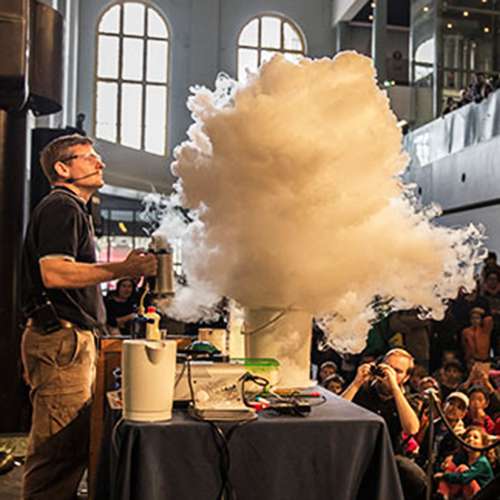
School science visits since 2004!
– Curriculum-linked & award-winning incursions.
– Over 40 primary & high school programs to choose from.
– Designed by experienced educators.
– Over 2 million students reached.
– Face to face incursions & online programs available.
– Early learning centre visits too!
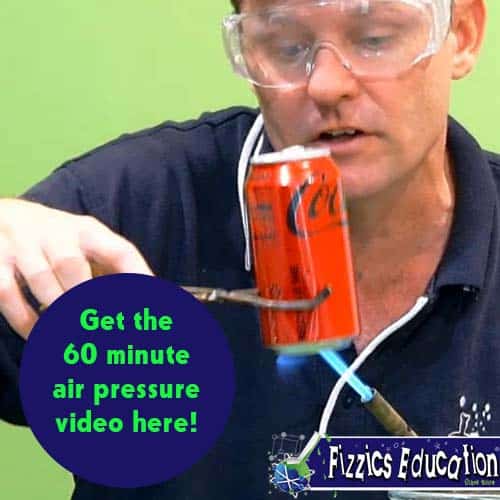
Get the Unit of Work on Pressure here!
- Want to dive into air pressure?
- It’s all about air pressure in many ways!
From how storms form to how planes fly, this unit covers many concepts about air pressure.
Includes cross-curricular teaching ideas, student quizzes, a sample marking rubric, scope & sequences & more
What is going on?
Adding hot water into the jar allows water vapour to fill the jar. This increases the humidity within the jar, however it is too warm for the water vapour molecules to condense and form a cloud. Temperature is a measure of how quickly molecules are moving and colliding. When the air molecules inside the jar are closer together the temperature can remain higher than when you separate these air molecules. By pulling on the rubber glove you were able to lower the temperature by increasing the volume of the air space (which means less collisions between the air molecules). The cloud formed inside the jar when the temperature was low enough for water molecules to condense around the smoke particles in the air.
Variables to test
- Try different temperatures of water in the jar. What is the minimum temperature needed for the cloud to form?
- Try using hairspray instead of smoke form a match. Does this make this easier or harder to form a cloud?
- Try large vs small jars.
- Teaching about air pressure? Check out the Flight or Weather show!
- Teaching about Newton’s laws? Check out the Forces, Friction & Movement workshop!
Get in touch with FizzicsEd to find out how we can work with your class.
Flight or Weather
Years 3 to 6
Maximum 30 students
School science show (NSW & VIC)
60 minutes
Online Class Available
Hands-on Kids Science Party
>20 hands on science experiments
Gigantic bubbles
Slime making
Professional science show
From $395 inc. GST
STEM Full Day Accelerator - Primary
Designed from real classroom experiences, this modular day helps you create consistently effective science learning that directly address the new curriculum with easily accessible and cost-effective materials.
Hot & Cold Workshop
Years 1 to 6
Maximum 30 students
School workshop (NSW & VIC)
60 or 90 minutes
Online Class Available

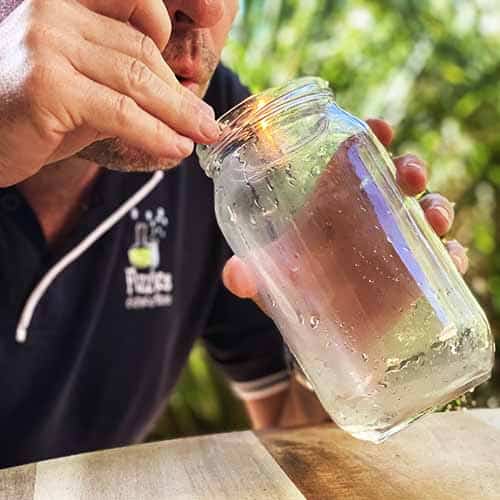
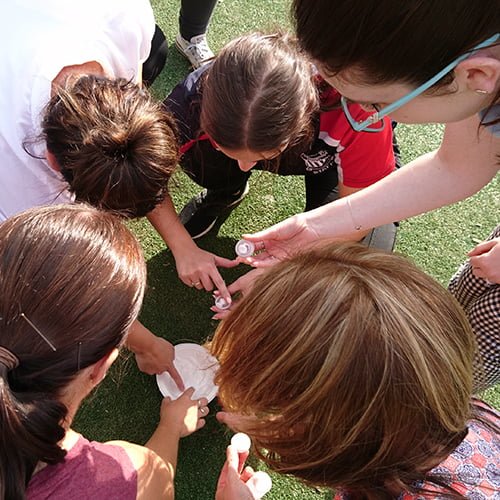
























Comments